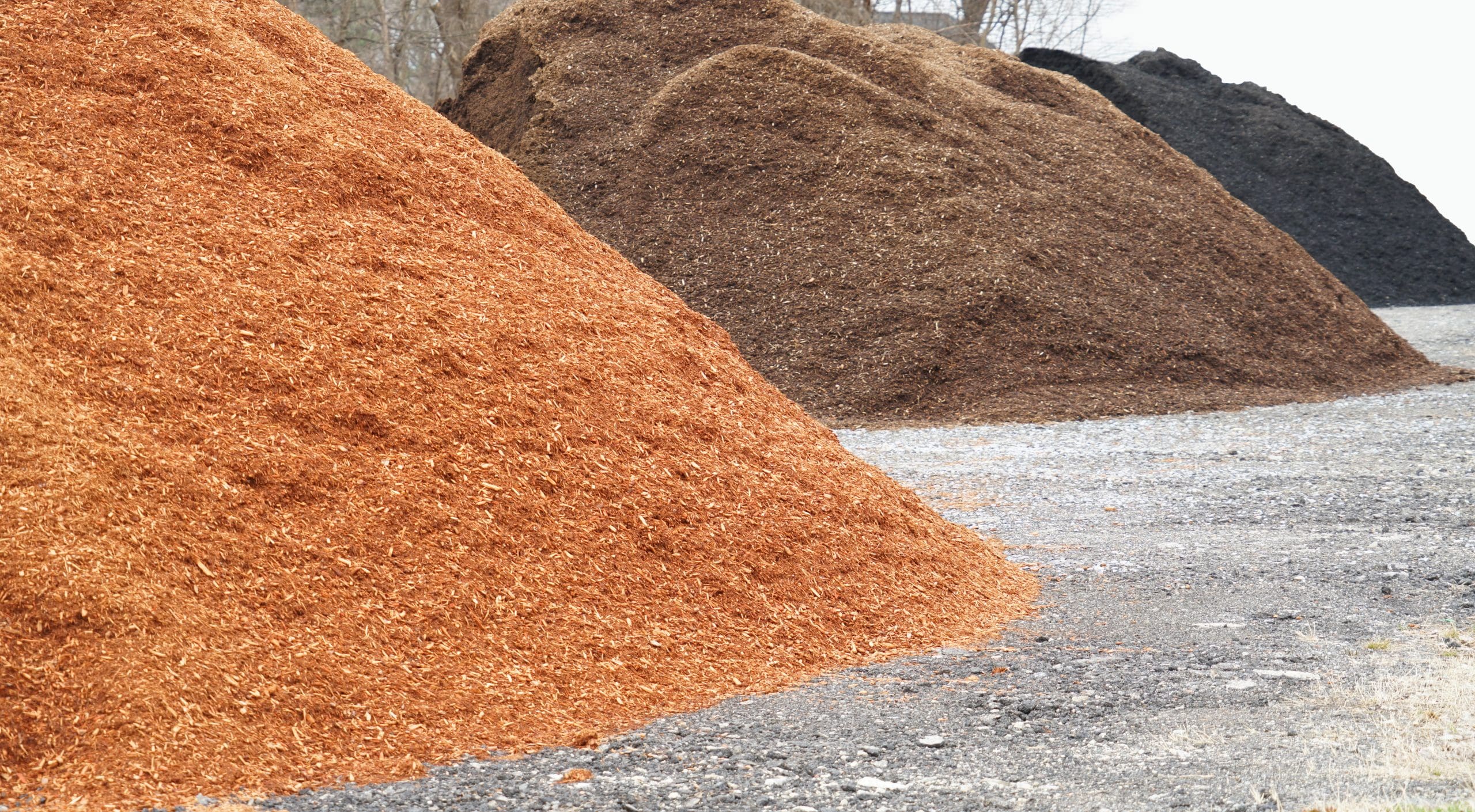
Mulch has a number of benefits, including maintaining soil temperatures, inhibiting weed growth and conserving water. It can also help create a cohesive look in the landscape. However, the number of options when it comes to mulch material is vast.
One question you have to ask your clients is if they prefer organic or inorganic mulch. Organic mulches will break down over time, adding nutrients to the soil, but this also means it will need to be replenished regularly. Inorganic mulches like decorative stone won’t break down, making it a one-and-done application, but it’s not an optimal growing environment for most plants.
When choosing your client’s mulch, consider the material’s resistance to compaction, attractiveness, resistance to wind, availability and if it’s a source of weeds and disease. Below are some of the common materials and their pros and cons.
Bark Chips
Bark chips are one of the most ubiquitous mulch materials for good reason. It has excellent resistance to compaction and movement by the wind. It is also attractive and readily available. Bark chips do not decay quickly. They are commonly used in shrub beds and around trees.
The only drawbacks are that the large nuggets tend to float away in the rain and it is not recommended to be placed next to foundations as it may attract termites.
Shredded Bark or Wood
Another frequent option is shredded bark or wood and these can come dyed in certain colors as well. Shredded bark is another attractive option that is resistant to wind and readily available. While it doesn’t do as well with compaction as bark chips, it’s still a dependable option.
The main cons for shredded bark is the color fades if you select a dyed variation and depending on the type of wood used, the material may contain toxins that can leach into the soil.
Pine Straw
Pine straw is a good choice for acid-loving plants. The needles lock together and stay in place better than some other mulches, especially on slopes. It also allows air, water and nutrients to reach the soil surface. They are resistant to compaction and decompose slowly.
One of the drawbacks is it may not be as readily available in certain areas. Also, it shouldn’t be used if you have plants that don’t do well in acidic soils.
Compost
Compost contains minerals and microorganisms and improves the structure and drainage of the soil. However, its value varies with ingredients and it can contain seeds from other plants. It is fairly attractive and is resistant to the wind.
The main drawback of compost is it breaks down in one season or less, requiring more frequent replacement.
Gravel/Solid Rock
Crushed stone or solid rocks like river rock can be used decoratively over a synthetic fabric. They aren’t easily blown around, don’t harbor diseases and don’t rob the soil of nitrogen. Stone is fitting for rock gardens or xeriscaping, depending on your region. They also provide good drainage.
The main drawback of using rocks is they can heat up, making it difficult for plants to survive and they can heat the soil for heat-loving weeds to survive. Avoid using limestone chips as they can raise the pH of the soil.
Shredded Rubber
Like other inorganic mulches, shredded rubber doesn’t have to be replaced and is resistant to wind. Unlike dyed shredded bark, the color doesn’t fade for rubber.
The use of shredded recycled rubber can be controversial. Heat can build up with this material and high levels of zinc found in rubber can lead to zinc toxicity in plants. Shredded rubber is also expensive.

